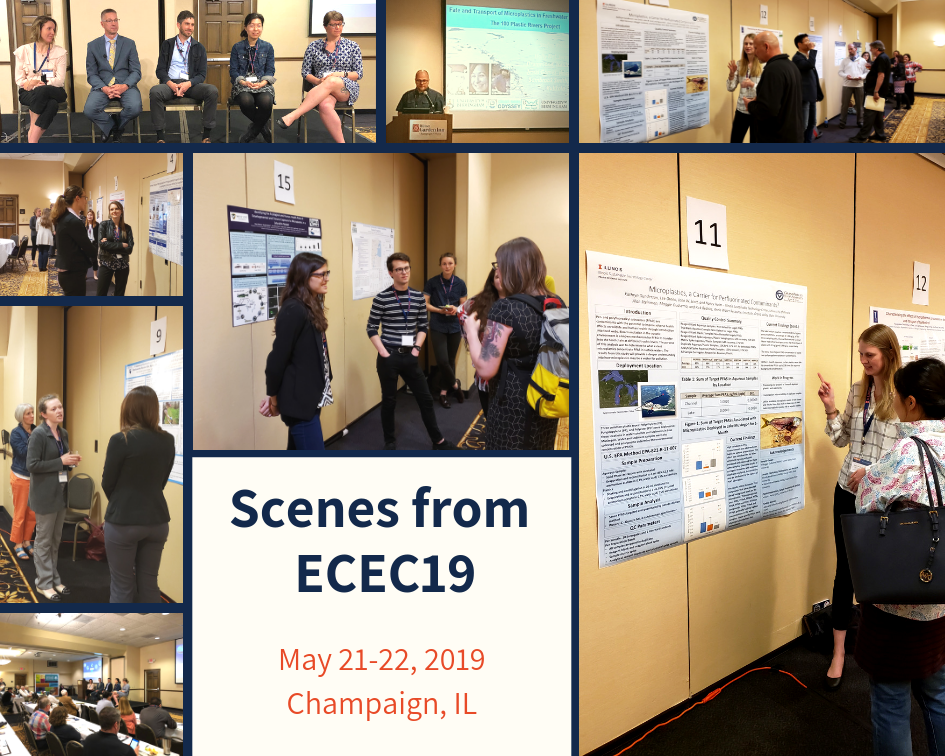The Illinois Sustainable Technology Center and Illinois-Indiana Sea Grant co-hosted the 2019 Emerging Contaminants Conference (ECEC19) on May 21-22 in Champaign, IL. The fourth annual conference featured presentations on the latest in emerging contaminant research, policies, and outreach strategies.
This year’s conference focused on a variety of pollutants in water, soil, and air ranging from pharmaceuticals, viruses, algal toxins and endocrine disruptors to pesticides, flame retardant chemicals, per- and polyfluoroalkyl substances (PFAS), and microplastics.

The conference speakers included:
- Susan Richardson from the University of South Carolina, who discussed the state of the art and new discoveries in identification and analysis of emerging contaminants;
- Thomas Bruton from the Green Science Policy Center, who encouraged attendees to move beyond a traditional risk management approach which deals with individual substances to think about emerging contaminants using a class-based approach. This method would eliminate the need for testing and regulating each individual contaminant in a particular group of chemicals;
- Robert Hale from the Virginia Institute of Marine Science, who explained that microplastics and megaplastics on land are just as big a concern as in water and that the many additives plastics make it very difficult to look at the effects they could potentially have on human and animal health.
- Krista Wigginton from the University of Michigan, who spoke about new detection methods for viruses in drinking water; and
- Katie Nyquist from the Minnesota Department of Public Health, who discussed how to effectively communicate with different audiences about the issue of emerging contaminants and the importance of getting good science out in the media to combat misinformation.
Other speakers addressed issues related to the public’s perceptions on plastics pollution; increased development of antimicrobial resistant bacteria; modeling contaminants; and new rapid detection methods for PFASs.
Poster session topics included microplastics as vectors for chemical contamination; concerns about nanoparticles in wastewater effluent; child care providers’ knowledge about environmental influences on children’s health; the impacts of emerging contaminants on amphibians and fish; and pharmaceutical disposal practices among veterinarians.
Learn more about the presentations and posters in the conference program booklet. Slides will be available on the conference website within the next two weeks. Details about specific ISTC research on emerging contaminants can be found on our website.

